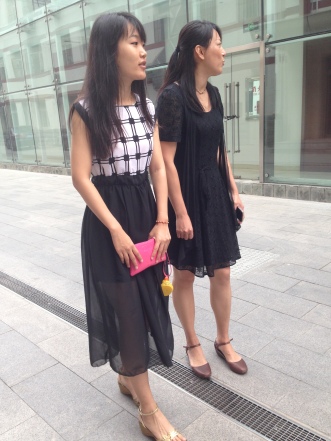Cloaking Inequity: Photo Essay: Chinese School is Lesson for US Policymakers

The Chinese are serious about vocational (aka career and technical education). The United States is not. Vocational education in the United States has a long history of being used as holding bin for African American students by purposefully providing inferior education relative to traditional academic and college preparatory education. Here is a quick background on the rise of vocational education abridged from the peer-reviewed paper From Jim Crow to the Top 10% Plan: A historical analysis of Latina/o access to a selective flagship university
First some historical background, then the photos.
During the first few decades of the 20th century, there was a rising notion in Texas that education should follow along “practical lines” (Eby, 1925). In other words, training in agricultural and other manual jobs as well as domestic service were seen as the goals of education. As a result, high schools began offering courses in the trades (e.g. auto mechanics, cooking, carpentry) (Holley, 1937). Furthermore, it became “the general view that this type of training was more suitable for the “colored” population because it fit them for more efficient service in the basic industries of the country” (Eby, 1925, p. 270). Though there was a strong opposition from some in the African American community, practical training “prevailed.” However, some African American-serving high schools wanted to have the “same cultural training as white people” (Eby, 1925). In fact, vocational curriculum was viewed as “lamentable”; but according to some vocational educational was more appropriate for African American students as they doubted “the wisdom and judgment of confronting the negro pupil with a course of study that little fits his life needs” (Taylor, 1927). Especially since only 4% of African American students made it to high school and much smaller number obtained a high school diploma (Taylor, 1927). In fact, the rise of vocational education was concomitant with the increasing African American high school attendance. From 1928-29 to 1935-1936 there was a 60% increase in the number of African American students in grades eight through eleven and a disproportionate number compared to whites were tracked into vocational work (Worley, 1937).
A recent student paper in my History of School Reform course authored by Alexander, Liao, and Worthington related,
Students eventually would be perceived to have different needs, skills, and mental capacities which required them to be prepared for socialization into society and especially to enter into the workplace in proper ways. Curriculum began to be differentiated and tailored to different kinds of students. It seemed common sense that students had differing levels of intelligence. Why prepare students for a lifestyle or job they could never attain? It was logical that students needed to be tracked and placed into proper classes that would better suit them and their inevitable future. Students could even find themselves in alternative education settings where they were prepared for a world of vocational work. At these schools, students could expect to learn skills demanded by manufacturers or merchants for their ever-growing industries of the time. Meanwhile, smarter students would find their way to college via the direction of counselors and other educators just as the “hand-minded” students had found their place (Tyack, 1974). The tracking systems of students became extremely predictable in American education. A child’s social and racial/ethnic background highly correlated with their tracking assignments. The poor, racial and ethnic minorities, and immigrants were routinely relegated to vocational schools and skills training programs(Bowles & Gintis, 1975; Tyack, 1974)
So what does vocational education (or Career and Technology) education look like when a society is actually interested in the economic benefit instead of using the approach as a holding bin for the “hand-minded” and students of color? (See also Invited Testimony: Same Shift, Different Day for Latinos and African Americans)
This week I am visiting China (see also the post After Thousand of Years, #China Changing Mind on #Testing ? #edreform) Early in the week we visited Beijing Jinsong Vocational School. More than $50 million and 6 acres later, the Chinese have a brilliant and invested approach to vocational education in this school. This is what a commitment to Career and Technology education looks like— relative to the holding bin approach utilized by the United States for the past 100 years.
I’ll try to post more photos when I get back to the US. These are from my IPhone. Internet is very difficult and restricted here in China (no Twitter, Facebook, DropBox, MSNBC etc). That is a story for another day.
In conclusion, tracking that has a disparate impact on students of color happens on purpose. Not by mistake and it continues as a modern day problem. A great book to read on how vocational education is purposefully structured is Jeanie Oakes’ Keeping Track: How Schools Structure Inequality.
This blog post has been shared by permission from the author.
Readers wishing to comment on the content are encouraged to do so via the link to the original post.
Find the original post here:
The views expressed by the blogger are not necessarily those of NEPC.
















